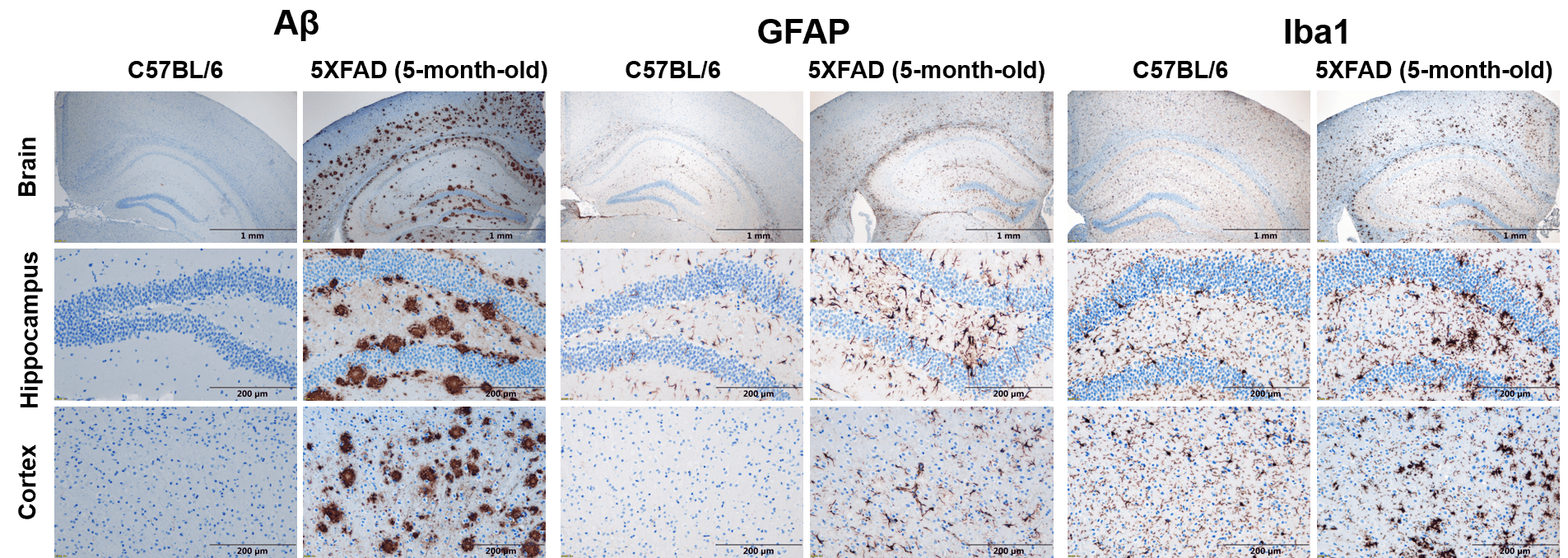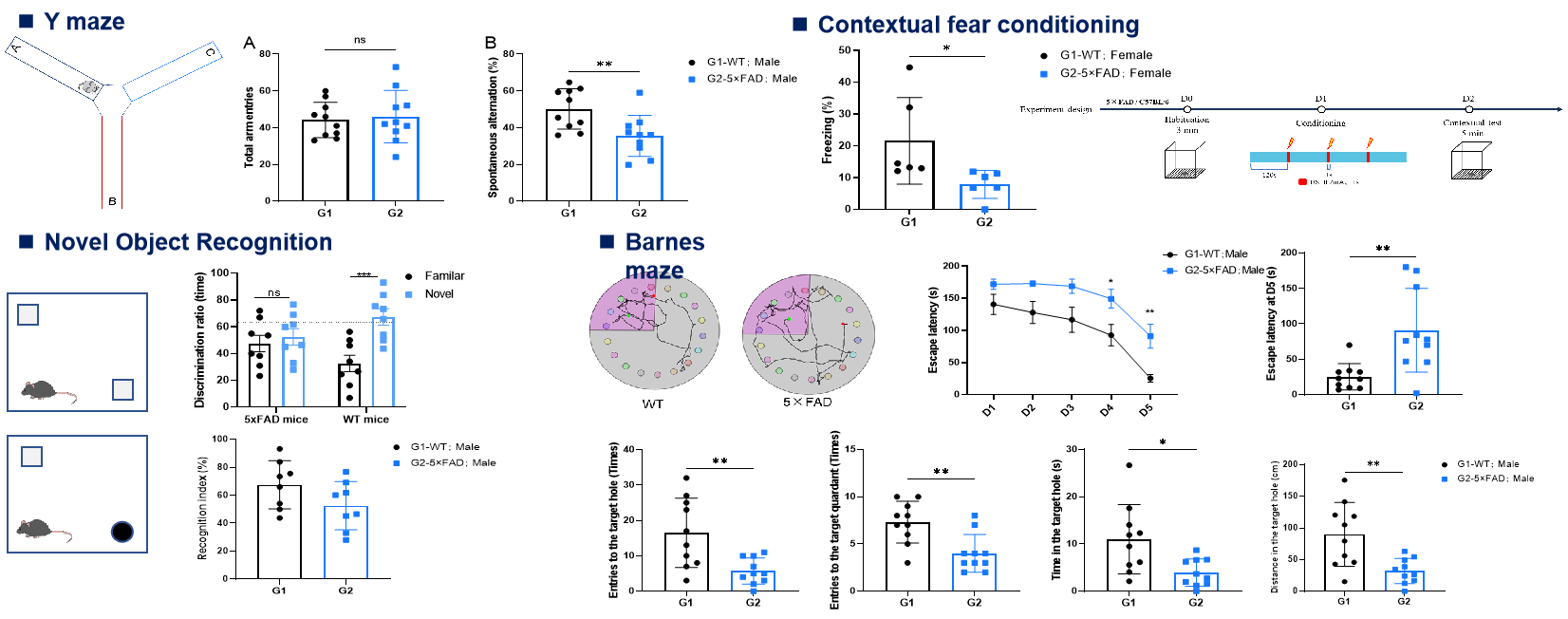Alzheimer's Disease (AD) Mouse Model Introduction
Alzheimer's disease, the most common cause of dementia, is a progressive and irreversible neurodegenerative disorder that gradually impairs cognitive functions such as memory, reasoning, and behavior.
Intracellular neurofibrillary tangles and extracellular amyloid β plaques are the hallmark characteristics found in the cortical and limbic areas.
Symptoms:
The early symptoms include mainly cognitive impairment in particular memory loss.
As cognitive function deteriorates. presentation of physical disabilities, such as the inability to walk, sit and eat indicates that the disease has progressed to the later stages.
Hypotheses on Pathogenesis:
- Presence of extracellular beta amyloid (Aβ) plaques
- Hyperphosphorylation of the tau protein and intracellular neurofibrillary tangles (NFTs)
- Overactivated NMDA receptors lead to excitotoxicity and impairment of the mitochondrial energy metabolism
- Loss of central cholinergic neurons that leads to deficiency of a neurotransmitter
Summary of Alzheimer's disease models in Biocytogen
| Model type |
Model names |
Modeling reagent |
Core Index |
Optional tests |
| Alzheimer's disease |
5×FAD mice |
- |
Morris water maze test
β-amyloid
Inflammation analysis |
Barnes maze test, Nest building test, Y-maze, NOR test or Fear conditioning test;
Synapse & Neuron |
| B-App NL-G-F mice |
- |
Morris water maze test
β-amyloid
Inflammation analysis |
Barnes maze test, Nest building test, Y-maze, NOR test or Fear conditioning test;
Synapse & Neuron |
| B-App NL-F / Psen1*M146L*E120K mice |
- |
Morris water maze test
β-amyloid
Inflammation analysis |
Barnes maze test, Nest building test, Y-maze, NOR test or Fear conditioning test;
Synapse & Neuron |
Results
Histopathological analysis of brain in Tg(5XFAD) mice
Brain was collected from wild-type (WT) mice, Tg (5XFAD) mice and processed into paraffin sections. The Aβ plaque, activated astrocytes and microglia in the cortex and hippocampus of 5-month-old WT mice and Tg (5XFAD) mice was detected by IHC with anti-human β-Amyloid antibody, anti-GFAP antibody and anti-Iba1 antibody.
Behavioral tests of Tg (5XFAD) mice(B6)
The data consistently showed that G1-WT mice outperform G2-5xFAD mice in various cognitive tasks, highlighting the detrimental effects of the 5xFAD mutation on spatial memory, recognition memory, and contextual fear conditioning. This supports the use of the 5xFAD model in studying Alzheimer's disease-related cognitive impairments.



